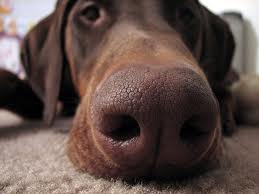 This morning at TexSom I didn’t drink a drop of wine but I tasted plenty of major wine flaws. At the same time, I also discovered another useful purpose for vodka. But I didn’t drink that either. Lest you think I’ve been dipping into something stronger, I’ll enlighten you: My nose got a major workout when I participated in unique blind tasting designed to illustrate some of the major faults and flaws in wine. The session, conducted by Gordon Burns and Eric Hervé, was one of the most instructive wine education classes that I’ve ever experienced. TexSom organizers James Tidwell and Drew Hendricks did the tasting earlier this year in California and added the seminar to this year’s Texas Sommelier Conference at the Four Seasons in Las Colinas.
This morning at TexSom I didn’t drink a drop of wine but I tasted plenty of major wine flaws. At the same time, I also discovered another useful purpose for vodka. But I didn’t drink that either. Lest you think I’ve been dipping into something stronger, I’ll enlighten you: My nose got a major workout when I participated in unique blind tasting designed to illustrate some of the major faults and flaws in wine. The session, conducted by Gordon Burns and Eric Hervé, was one of the most instructive wine education classes that I’ve ever experienced. TexSom organizers James Tidwell and Drew Hendricks did the tasting earlier this year in California and added the seminar to this year’s Texas Sommelier Conference at the Four Seasons in Las Colinas.
Gordon Burns and Eric Hervé are scientists with ETS Laboratories in St. Helena, CA. They normally spend their time analyzing wines for wineries and other clients for signs of spoilage. Today, they deliberately doctored eight glasses of vodka with the smell of eight common wine flaws detectable through smell alone. The vodka essentially acted as a solvent for the aromas. The audience of 300 wine professionals got to guess, from taste alone, what the flaws were.
Jump for the curious results.
Burns and Hervé explained that most flaws fall into four categories: microbial spoilage, oxidation/premature aging, reduction/sulfides, and environmental. To get a sense of what to expect, the first glass had vodka alone, diluted to 12% ethanol by volume (about the alcohol level of table wine). This served as our reference point for the aroma of the base spirit.
The next seven samples contained the nose of one of the flaws. (Boy, take that sentence out of context and it makes no sense.) We had to determine which was which. I have summarized them in a table below as some of them have words too long to fit in my brain.
When you taste wine, see if you can detect these aromas. Although they are regarded as flaws, they aren’t necessarily unpleasant to everybody. For example, honeycomb or roses are pleasant smells, they just shouldn’t be present in wine. Also, different people have different sensitivities to off-odors. Different people will detect these aromas at different concentrations. Some concentrations are very low. For example, TCA (Trichloroanisole) is detectable by the average person at concentrations of 8 parts per trillion. To put that in perspective, Burns said that a quarter dropped over the combined land area of North and South Dakota amounted to covering 1 part per billion of the land. While you check the chart, I’m going to get a drink…
| Smell | Underlying Fault | Probable Cause | Category of Fault |
| Nail polish remover | Ethyl Acetate | Wild yeast | Microbial spoilage |
| Leather, Band-Aid, cinnamon | 4EP/4EG (4-Ethylphenol/4-Ethylguaiacol. The sensory components of Brettanomyces | Oak barrels | Microbial spoilage |
| Rotting apples. Burned, oxidized. | Acetaldehyde | Oxidation of ethanol | Oxidation/premature aging |
| Baby powder, roses, honeycomb | Phenylacetaldehyde | Oxidation of 2-phenylethanol or Strecker degradation of phenylalanine | Oxidation/premature aging |
| Natural gas, rotten cabbage/cooked vegetable | Methylmercaptan/Dimethyldisulfide | Yeast byproducts | Reduction/sulfides |
| Canned corn, asparagus, olive, truffle, fruit enhancer | Dimethylsulfide (DMS) | Degradation od S-methylmethionine or reduction of DMSO | Reduction/sulfides |
| Moldy, cork taint | TCA (2,4,6 Trichloroanisole) | Mold byproduct | Environmental |





